65 start with R start with R
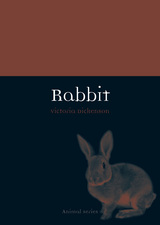
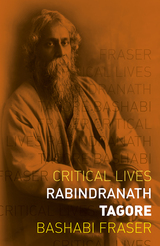
In this timely reappraisal of Tagore’s life and work, Bashabi Fraser assesses Tagore’s many activities and shows how he embodies the modern consciousness of India. She examines his upbringing in Bengal, his role in Indian politics, and his interests in international relationships. Taking a holistic perspective, she also addresses some of the misreadings of his extraordinary life and work.
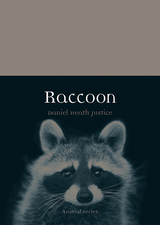
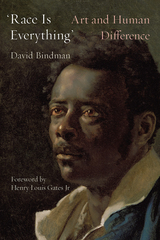
‘Race Is Everything’ explores the spurious but influential ideas of so-called racial science in the nineteenth and the first half of the twentieth centuries, and how art was affected by it. David Bindman looks at race in general, but with particular concentration on attitudes toward and representations of people of African and Jewish descent. He argues that behind all racial ideas of the period lies the belief that outward appearance—and especially skull shape, as studied in the pseudoscience of phrenology—can be correlated with inner character and intelligence, and that these could be used to create a seemingly scientific hierarchy of races. The book considers many aspects of these beliefs, including the skull as a racial marker; ancient Egypt as a precedent for Southern slavery; Darwin, race, and aesthetics; the purported “Mediterranean race”; the visual aspects of eugenics; and the racial politics of Emil Nolde.
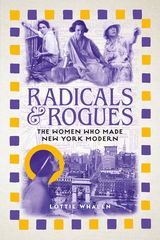
This is the story of a group of women whose experiments in art and life set the tone for the rise of New York as the twentieth-century capital of modern culture. Across the 1910s and ’20s, through provocative creative acts, shocking fashion, political activism, and dynamic social networks, these women reimagined modern life and fought for the chance to realize their visions. Taking the reader on a journey through the city’s salons and bohemian hangouts, Radicals and Rogues celebrates the tastemakers, collectors, curators, artists, and poets at the forefront of the early avant-garde scene. Focusing on these trailblazers at the center of artistic innovation—including Beatrice Wood, Mina Loy, the Stettheimer sisters, Clara Tice, the Baroness Elsa von Freytag Loringhoven, Gertrude Vanderbilt Whitney, Marguerite Zorach, and Louise Arensberg—Lottie Whalen offers a lively new history of remarkable women in early twentieth-century New York City.

Alasdair Pinkerton’s story is shaped by radio’s multiple characters and characteristics—radio waves occur in nature, for instance, but have also been harnessed and molded by human beings to bridge oceans and reconfigure our experience of space and time. Published in association with the Science Museum, London, Radio is an informative and thought-provoking book for all enthusiasts of an old technology that still has the capacity to enthuse, entertain, entice, and enrage today.
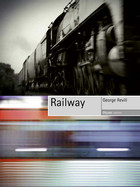
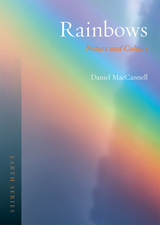
The scientific “discovery” of the rainbow is a remarkable tale, taking in ancient Greece and Rome, medieval Persia, and Islamic Spain. But even as we’ve studied rainbows, adopted their image, and penned odes to them for millennia, rainbows have also been regarded as ominous or even dangerous in myth and religion. In the twentieth century, the rainbow emerged as kitsch, arcing from the musical film version of The Wizard of Oz to 1980s sitcoms and children’s cartoons. Illustrated throughout in prismatic color, MacCannell’s Rainbows explores the full spectrum of rainbows’ nature and meaning, offering insight into what rainbows are and how they work, how we arrived at our current scientific understanding of the phenomenon, and how we have portrayed them in everything from myth to the arts, politics, and popular culture.
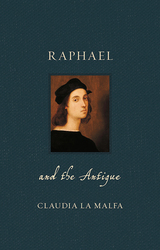
In Raphael and the Antique, Claudia La Malfa gives a full account of Raphael’s prodigious career, from central Italy when he was seventeen years old, to Perugia, Siena, and Florence, where he first met with Leonardo and Michelangelo, to Rome where he became one of the most feted artists of the Renaissance. This book brings to light Raphael’s reinvention of classical models, his draftsmanship, and his concept of art—ideas he pursued and was still striving to perfect at the time of his death in 1520 at the young age of thirty-seven.
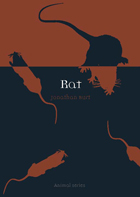
Central to Rat is the history of the relationship between humans and rats and, in particular, the complex human attitudes toward these shrewd creatures. Burt examines why the rat is viewed as more loathsome and verminous than other parasitic animals and considers why humans have had diametrically opposed attitudes about the rat: some cultures greatly admire the rat for its skills, while others consider the rat the scourge of the earth. Burt also draws on a wide range of examples to explore the rat's role in science, culture, and art, from its appearances in children's literature such as The Wind in the Willows to Victorian rat- and dog-baiting pits to its symbolic roles in folklore.
Rat offers an intriguing and richly illustrated study of one of nature's most remarkable creatures and ultimately finds that the rat exists as a perverse totem for the worst excesses of human behavior.
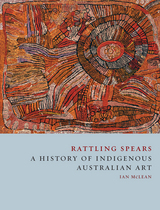
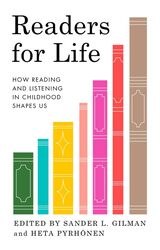
Readers for Life is a collection of essays, mainly specially commissioned for the book, by fiction authors and literary scholars, who reflect on their childhood or adolescent memories of reading. The essays explore how the act of reading shapes an individual, from our formative years into adulthood and beyond. Instead of focusing on reading as an act of escapism, or mere literacy, these writings celebrate reading as a lifelong, joyful experience that intertwines past and present. By revealing our diverse reading histories, the collection fosters awareness of the profound impact of reading on a person’s development and offers readers insights that will enrich their own literary experiences.
Featuring an introduction by editors Sander L. Gilman and Heta Pyrhönen, Readers for Life includes essays by Natalya Bekhta, Peter Brooks, Philip Davis, Linda and Michael Hutcheon, Sander L. Gilman, Daniel Mendelsohn, Laura Otis, Laura Oulanne, Heta Pyrhönen, Salman Rushdie, Cristina Sandu, Pajtim Statovci, and Maria Tatar, as well as an interview with Michael Rosen.
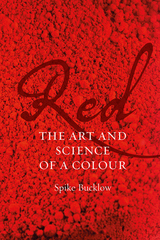
Bucklow takes us from a thirty-four-thousand-year-old shaman burial dress to the iPhone screen, exploring the myriad of purposes we have put red to as well as the materials from which we have looked to harvest it. And we have looked for it everywhere, from insects to tree resin to tar to excitable gasses. Bucklow also details how our pursuit of the color drove medieval alchemy and modern chemistry alike, and he shows us red’s many symbolic uses, its association with earth, blood, and fire, its coloring of caves and the throne rooms of goddesses, as well as national flags, fire trucks, power grids, and stoplights.
The result is a material and cultural history that makes one see this color afresh, beating with vibrancy, a crucial part of the human visual world.
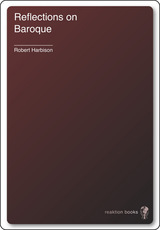
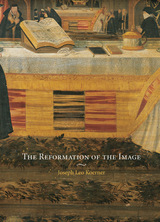
But if words—not iconic images—showed the way to salvation, why didn't religious imagery during the Reformation disappear along with indulgences? The answer, according to Joseph Leo Koerner, lies in the paradoxical nature of Protestant religious imagery itself, which is at once both iconic and iconoclastic. Koerner masterfully demonstrates this point not only with a multitude of Lutheran images, many never before published, but also with a close reading of a single pivotal work—Lucas Cranach the Elder's altarpiece for the City Church in Wittenberg (Luther's parish). As Koerner shows, Cranach, breaking all the conventions of traditional Catholic iconography, created an entirely new aesthetic for the new Protestant ethos.
In the Crucifixion scene of the altarpiece, for instance, Christ is alone and stripped of all his usual attendants—no Virgin Mary, no John the Baptist, no Mary Magdalene—with nothing separating him from Luther (preaching the Word) and his parishioners. And while the Holy Spirit is nowhere to be seen—representation of the divine being impossible—it is nonetheless dramatically present as the force animating Christ's drapery. According to Koerner, it is this "iconoclash" that animates the best Reformation art.
Insightful and breathtakingly original, The Reformation of the Image compellingly shows how visual art became indispensable to a religious movement built on words.

Peavitt takes us to the early closets, cabinets, and boxes into which we first started packing ice and the various things we were trying to keep cool. From there she charts the development of mechanical and chemical technologies that have led to modern-day refrigeration on both industrial and domestic scales, showing how these technologies have created a completely new method of preserving and transporting perishable goods, having a profound impact on society from the nineteenth century and on. She explores the ways the marketing of refrigerators have expressed and influenced our notions of domestic life, and she looks at how refrigeration has altered the agriculture and food industries as well as our own appetites.
Strikingly illustrated, this book offers an informative and entertaining history of an object that has radically changed—in a little over one hundred years—one of the most important things we do: eat.
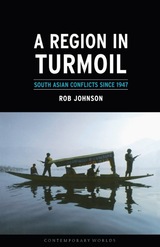
A Region in Turmoil offers a new perspective on the area, drawing together the conflicts of South Asia and examining them in local and global contexts, from the end of the Western colonial empires through today's global efforts to combat terrorism. Johnson's incisive analysis breaks down the historical and political roots of the conflicts and departs from traditional Western-centric paradigms to reveal heretofore overlooked South Asian viewpoints on the conflicts and connections among the wars. He probes the causes, contexts, and conclusions of the conflicts, ranging from the enduring insurgency in Myanmar to the struggle of the Tamil Tigers in Sri Lanka, the unrest in the Punjab and Assam states, the Bangladeshi war of independence, and the intractable struggles in Kashmir and Afghanistan.
The twenty-first century opened with South Asia front and center on a turbulent political stage: the region is not only the designated frontline for the "war on terror" but also home to the newest nuclear powers, India and Pakistan. A Region in Turmoil addresses this critical contemporary crisis with an invaluable analysis of the region and its complex history, making it essential reading for historians, policymakers, and anyone who reads the front page of the daily newspaper.
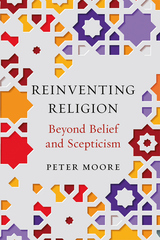
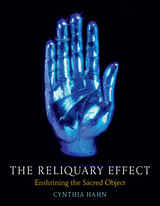
Hahn looks deeply into the Christian tradition, examining relics and reliquaries throughout history and around the world, going from the earliest years of the cult of saints through to the post-Reformation response. She looks at relic footprints, incorrupt bodies, the Crown of Thorns, the Shroud of Turin, and many other renowned relics, and she shows how the architectural creation of sacred space and the evocation of the biblical tradition of the temple is central to the reliquary’s numinous power. She also discusses relics from other traditions—especially from Buddhism and Islam—and she even looks at how reliquaries figure in contemporary art. Fascinatingly illustrated throughout, this book is a must-read for anyone interested in the enduring power of sacred objects.
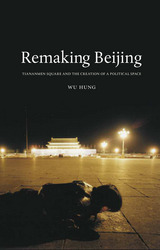
Wu Hung grew up in Beijing and experienced much of the city's makeover firsthand. In this lavishly illustrated work, he offers a vivid, often personal account of the struggle over Beijing's reinvention, drawing particular attention to Tiananmen Square—the most sacred space in the People's Republic of China. Remaking Beijing considers the square's transformation from a restricted imperial domain into a public arena for political expression, from an epic symbol of socialism into a holy relic of the Maoist regime, and from an official and monumental complex into a site for unofficial and antigovernment demonstrations.
Wu Hung also explores how Tiananmen Square has become a touchstone for official art in modern China—as the site for Mao's monumental portrait, as the location of museums narrating revolutionary history, and as the grounds for extravagant National Day parades celebrating the revolutionary masses. He then shows how in recent years the square has inspired artists working without state sponsorship to create paintings, photographs, and even performances that reflect the spirit of the 1989 uprisings and pose a forceful challenge to official artworks and the sociopolitical system that supports them.
Remaking Beijing will reward anyone interested in modern Chinese history, society, and art, or, more generally, in how urban renewal becomes intertwined with cultural and national politics.
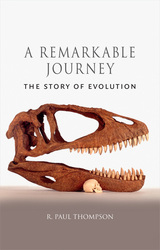
As Thompson shows, the tortuous path from Darwin’s brilliant formulation to today’s robust and vibrant model is filled with intrigue. Evolutionary theory has become, in many respects, the center of biological science, and its maturation is an indication of a larger and more sophisticated scientific understanding more generally. But this development was not easily won, a point Thompson makes clear as he takes readers from one stage of the theory’s maturation to the next, detailing all that went into the development of what most of us now take for granted as a basic—and beautiful—principle of life.
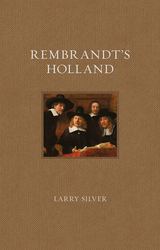
Rembrandt van Rijn and the Netherlands grew up together. The artist, born in Leiden in 1606, lived during the tumultuous period of the Dutch Revolt and the establishment of the independent Dutch Republic. He later moved to Amsterdam, a cosmopolitan center of world trade, and became the city’s most fashionable portraitist. His attempts to establish himself with the powerful court at The Hague failed, however, and the final decade of his life was marked by personal tragedy and financial hardship.
Rembrandt’s Holland considers the life and work of this celebrated painter anew, as it charts his career alongside the visual culture of urban Amsterdam and the new Dutch Republic. In the book, Larry Silver brings to light Rembrandt’s problematic relationship with the ruling court at The Hague and reexamines how his art developed from large-scale, detailed religious imagery to more personal drawings and etchings, moving self-portraits, and heartfelt close-ups of saintly figures. Ultimately, this readable biography shows how both Rembrandt and the Dutch Golden Age ripened together.
Featuring up-to-date scholarship and in-depth analysis of Rembrandt’s major works, and illustrated beautifully throughout, it is essential reading for art students and anyone who enjoys the work of the Dutch Masters.
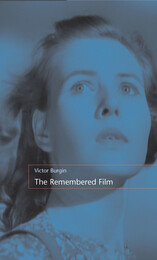
Victor Burgin examines a kaleidoscope of film fragments drawn from a variety of media, the internet, memory and fantasy. Among these are sequences of such brevity they might almost be stills. Such "sequence-images", as Burgin calls them, are neither strictly "image" nor "image sequence" and have not been considered before by either film or photography theory. He also considers some typical individual experiences "sampled" from mainstream cinema. He reflects on such disparate occurrences as the association in memory of fragments from otherwise unrelated films, of the relation of a recollected film image to an architectural setting, or of a feeling "marked" by an image remembered from a film.
The Remembered Film provides a radical new way of thinking about film outside conventional cinema, and in relation to our everyday lives. It will appeal to a wide audience interested in film and media.
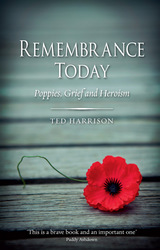
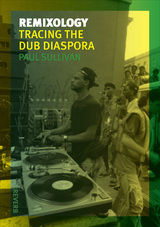
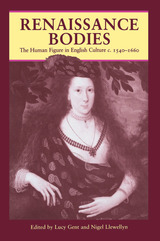
With essays by John Peacock, Elizabeth Honig, Andrew and Catherine Belsey, Jonathan Sawday, Susan Wiseman, Ellen Chirelstein, Tamsyn Williams, Anna Bryson, Maurice Howard and Nigel Llewellyn.
"The whole book ... presents a mirror of contemporary concerns with power, the merits and demerits of individualism, sex-roles, 'selves', the meaning of community and (even) conspicuous consumption."—The Observer
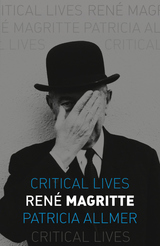
Allmer’s analyses of these events and their influence on both well-known and less familiar images give new insights into Magritte’s art. The book will appeal to those who wish to know more about Magritte’s life and work, as well as to the wide audience for surrealism.
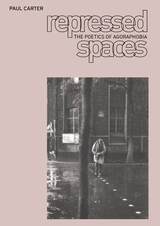
Taking as his starting-point the fact that Freud himself was agoraphobic, and analyzing the way people have negotiated open spaces from Greek and Roman times to the present day, Paul Carter finds that "space fear" ultimately results from the inhibition of movement. Along the way, the author asks why Freud repressed his agoraphobia, and examines literature, the work of architects and theorists – including Le Corbusier, Walter Benjamin and R. D. Laing – artists such as Munch, Lapique and Giacometti, and the German "street films" of the 1920s. He concludes by proposing a new way of regarding open space, a new "poetics of agoraphobia", one that is sensitive to the agoraphobe’s point of view and provides lessons for architects and urban planners today.
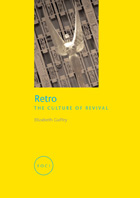
Bell-bottoms are in. Bell-bottoms are out. Bell-bottoms are back in again. Fads constantly cycle and recycle through popular culture, each time in a slightly new incarnation. The term “retro” has become the buzzword for describing such trends, but what does it mean? Elizabeth Guffey explores here the ambiguous cultural meanings of the term and reveals why some trends just never seem to stay dead.
Drawing upon a wealth of original research and entertaining anecdotal material, Guffey unearths the roots of the term “retro” and chronicles its evolving manifestations in culture and art throughout the last century. Whether in art, design, fashion, or music, the idea of retro has often meant a reemergence of styles and sensibilities that evoke touchstones of memory from the not-so-distant past, ranging from the drug-induced surrealism of psychedelic art to the political expression of 1970s afros.
Guffey examines how and why the past keeps coming back to haunt us in a variety of forms, from the campy comeback of art nouveau nearly fifty years after its original decline, to the infusion of art deco into the kitschy glamor of pop art, to the recent popularity of 1980s vogue. She also considers how advertisers and the media have employed the power of such cultural nostalgia, using recycled television jingles, familiar old advertising slogans, and famous art to sell a surprising range of products.
An engrossing, unprecedented study, Retro reveals the surprising extent to which the past is embedded in the future.
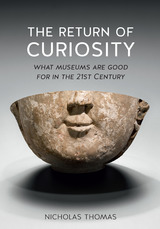
Reflecting on art galleries, science and history institutions, and collections all around the world, Nicholas Thomas argues that, in times marked by incredible insecurity and turbulence, museums help us sustain and enrich society. Moreover, they stimulate us to think in new ways about our world, compelling our curiosity and showing us the importance of understanding one another. Thomas looks at museums not simply as storehouses of old things but as the products of meaningful relationships between curators, the public, history, and culture. These relationships, he shows, don’t always go smoothly, but they do always offer new insights into the many ways we value—and try to preserve—the world we live in.
The result is a refreshing and hopeful look at museums as a cultural force, one that, by gathering together paintings, tropical birds, antiques, or even our own bodies, offers an illuminating reflection of who we are.
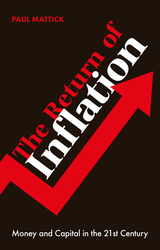
The last year has seen the return of inflation as a preoccupation of political decision-makers, economists, and the general public. After two decades of wondering why inflation was so low, despite vast economic stimulus, economists were surprised by the recent surge in price increases. Despite disagreement about what exactly is happening in the economy, there is unanimity in one belief: slowing growth to control inflation. To focus on inflation’s return, Paul Mattick looks at both the past and present, placing current events in the context of capitalism’s history. Exploring the nature of money itself, he provides a concise, jargon-free understanding of recent inflation as well as official efforts to control it, illuminating the state of our contemporary economy.
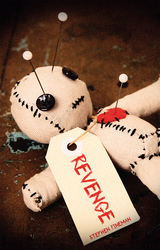
In this bold new book, Stephen Fineman lifts the lid on revenge, exposing its intriguing contours in arenas as diverse as the workplace, intimate relationships, the search for societal justice, war, and politics. He explores the psychology and experience of revenge and touches on more recent manifestations, like cyber-stalking and revenge pornography, in order to ask important questions: How best can we prevent the most damaging effects of revenge? When should retribution be tolerated, or even celebrated? If we are all potential avengers, what does that say about us?
In an age when digital media has created a new generation of armchair avengers, settling real or imaginary scores and starting-up new ones, Revenge is more than timely. Thoughtful and critical, Revenge tackles one of society’s oldest and greatest vices.

In his compelling retelling of the conflict, Anton van der Lem explores the main issues at stake on both sides of the struggle and why it took eighty years to achieve peace. He recounts in vivid detail the roles of the key protagonists, the decisive battles, and the war’s major turning points, from the Spanish governor’s Council of Blood to the Twelve Years Truce, while all the time unraveling the shifting political, religious, and military alliances that would entangle the foreign powers of France, Italy, and England. Featuring striking, rarely seen illustrations, this is a timely and balanced account of one of the most historically important conflicts of the early modern period.
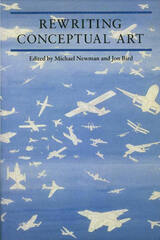
Investigating and documenting the histories, theories and forms of Conceptual Art, this timely book, including both established writers and a new generation of art historians, shows that Conceptual Art was a broad movement encompassing a range of artistic tendencies. This is the most stimulating account of the movement to date, arguing forcefully for its vitality and potential as well as examining its influence on art today.
With essays by Alex Alberro, Stephen Bann, Jon Bird, David Campany, Helen Molesworth, Michael Newman, Peter Osborne, Birgit Pelzer, Desa Philipagesi, Anne Rorimer, Peter Wollen and William Wood.
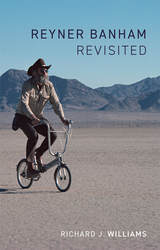
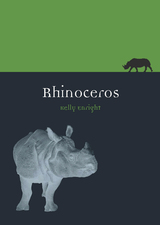
Enright chronicles the vexed interactions between humans and rhinos, from early sightings that mistook the rhinoceros for the mythical unicorn to the eighteenth-century display of the rhinoceros in Europe as a wonder of nature and its introduction to the American public in 1830. The rhinoceros has long been a prized hunting object as well, whether for its horn as a valuable ingredient in Asian medicine or as a coveted trophy by nineteenth-century big-game hunters such as Theodore Roosevelt, and the book explains how such practices have led to the rhino’s status as an endangered species. Enright also considers portrayals of the animal in film, literature, and art, all in the service of discovering whether the reputed savagery of the rhino is a reality or a legacy of its mythic past.
A wide-ranging, highly illustrated study, Rhinoceros will be essential for scholars and animal lovers alike.
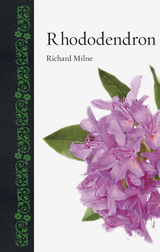
But there is a darker side to these gorgeous flowers. Daphne du Maurier used the red rhododendron as a symbol of blood in her best-selling novel Rebecca, and numerous Chinese folktales link the plant with tragedy and death. It can poison livestock and intoxicate humans, and its narcotic honey has been used as a weapon of war. Rhododendron ponticum has run riot across the British countryside, but the full story of this implacable invader contains many fascinating surprises.
In this beautifully illustrated volume, Richard Milne explores the many ways in which the rhododendron has influenced human societies, relating this to the extraordinary story of the plant’s evolution. Over one thousand species of the plant exist, ranging from rugged trees on Himalayan slopes to rock-hugging alpines, and delicate plants perched on rainforest branches. Milne relays tales of mythical figures, intrepid collectors, and eccentric plant breeders. However much you may think you know about the rhododendron, this charming book will offer something new.
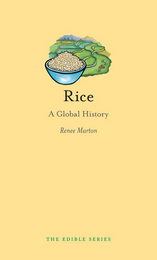
Examining the early years of rice’s burgeoning popularity, Marton shows that trade of the grain was driven by profit from both high status export rice and the lower-quality versions that fed countless laborers. In addition to urbanization and the increase in marketing and advertising, she reveals that rice’s rise to supremacy also came through its consumption by slave, indentured servant, and immigrant communities. She also considers the significance rice has in cultural rituals, literature, music, painting, and poetry. She even shows how the specific rice one consumes can have great importance in distinguishing one’s identity within an ethnic group. Chock full of delicious recipes from across the globe, Rice is a fascinating look at how this culinary staple has defined us.
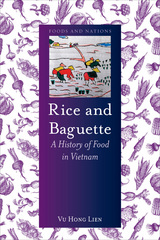
Rice and Baguette traces the prehistoric Việt’s progress from hunter-gathers of mollusks and small animals to sophisticated agriculturalists. The book follows them as they developed new tools and practices to perfect the growing of their crops until rice became a crucial commodity,which then irrevocably changed their diet, lifestyle, and social structure. Along the way, the author shows how Việt cuisine was dramatically influenced by French colonial cookery and products, which introduced a whole new set of ingredients and techniques into Vietnam. Beautifully illustrated throughout and peppered with fascinating historical tales, Rice and Baguette reveals the long journey that Vietnamese food has traveled to become the much-loved cuisine that it is today.
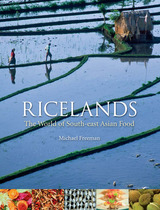
Ricelands takes the reader on a colorful and engaging tour of these popular tourist destinations through the richly layered cultures surrounding the various food traditions. Traveling across the landscapes of Thailand, Vietnam, Burma, Cambodia, Malaysia, Laos, Indonesia, and the Philippines, Freeman explores the origins of their respective cuisines, the defining characteristics of authentic dishes, and the evolution of the cuisines as they entered foreign cultures. From birds’ nests gathered in Thailand’s coastal caves to the less familiar dishes of Burma and Cambodia to the pungent durian fruit (and Westerners’ often aghast reactions), the author unearths unexpected treasures and tantalizing facts about Southeast Asia and its social history. The book also examines the cooking techniques, complex spices, and agricultural economies that underpin the countries’ food cultures, and considers how the informal nature of Southeast Asian eating fits into the rhythms of modern-day living.
Vibrantly illustrated and elegantly conceived, Ricelands takes us into the heart of tropical Asia and the delicious foods that define it the world over.
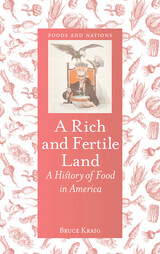
From the first Native Americans to modern industrial farmers, Kraig takes us on a journey to reveal how people have shaped the North American continent and its climate based on the foods they craved and the crops and animals that they raised. He analyzes the ideas that Americans have about themselves and the world around them, and how these ideas have been shaped by interactions with their environments. He details the impact of technical innovation and industrialization, which have in turn created modern American food systems.
Drawing upon recent evidence from the fields of science, archaeology, and technology, A Rich and Fertile Land is a unique and valuable history of the geography, climate, and food of the United States.

Brilliant, hard-working, and immensely productive, the naturalist Richard Owen was a great ambassador for science and played an outsized role in shaping London’s Natural History Museum. Still, Owen was a provocative bully, accused of plagiarism, and the only man Charles Darwin claimed to hate since Owen staunchly opposed his ideas about natural selection despite sharing similar views himself. This biography gives an account of Owen’s life and work and offers some speculation about the reasons behind his controversial behavior and strained relationships.

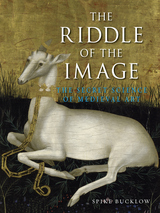
Examining the science of the tools and resources, as well as the techniques of medieval artists, Bucklow adds new layers to our understanding and appreciation of paintings in particular and medieval art more generally. He uses case studies—including The Wilton Diptych, one of the most popular paintings in the National Gallery in London and the altarpiece in front of which English monarchs were crowned for centuries—and analyses of these works, presenting previously unpublished technical details that shed new light on the mysteries of medieval artists. The first account to examine this subject in depth for a general audience, The Riddle of the Image is a beautifully illustrated look at the production of medieval paintings.
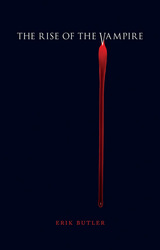
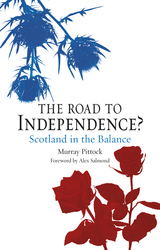
Pittock charts Scotland’s economic, cultural, and social histories, focusing on the history and cultural impact of Scottish cities and industries, the role of multiculturalism in contemporary Scottish society, and the upheaval of devolution, including the 2007 election of Scotland’s first nationalist government. From the architecture and art of Edinburgh and Glasgow to the Scottish Parliament, the book investigates every aspect of modern Scottish society to explain the striking rise of Scottish nationalism since 1960. Now brought up to date and with a new foreword by Scottish First Minister Alex Salmond, The Road to Independence? reveals a new perspective on modern Scottish culture on the eve of Scotland’s referendum on independence from the UK in September 2014.
“Enormously informative and often thought-provoking. . . . This book could hardly be improved on: it’s lively, lucid, witty, beautifully written.”—Scotsman
“A well-arranged exposition of the various pressures and stresses Scottish society has faced and faces still.”—Diplomat
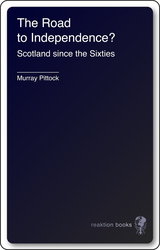
Pittock charts Scotland’s economic, cultural, and social histories, focusing on the history and cultural impact of Scottish cities and industries, the role of multiculturalism in contemporary Scottish society, and the upheaval of devolution, including the 2007 election of Scotland’s first nationalist government. From the architecture and art of Edinburgh and Glasgow to the Scottish Parliament, the book investigates every aspect of modern Scottish society to explain the striking rise of Scottish nationalism since 1960. The Road to Independence? reveals a new perspective on modern Scottish culture, making it an invaluable read for history scholars and lovers of Scotland alike.
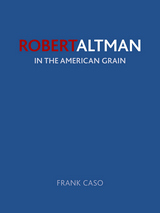
Altman is one of those directors whose films audiences can easily recognize, but what exactly are the distinctive elements that have become his signature? Caso identifies more than twenty such elements in Altman’s style, tracing some—such as his use of free-hand cameras and engagement with Christian imagery—to the beginning of his career. Caso also examines Altman’s unsettling mix of offbeat comedic tone with a predominance of violence, murder, and death, showing how their counterpointing effects rendered his films at once naturalistic and otherworldly.
Exploring these and other aspects of the Altmanesque style, Caso maps the innovations that have made Altman a master filmmaker. Enriched with illustration throughout, Robert Altman will appeal to fans of this distinctive American auteur or anyone interested in ground-breaking cinema.
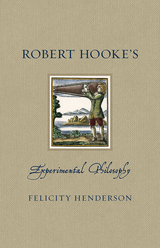
Robert Hooke was England’s first professional scientist and a pioneer of science communication. He was also one of the earliest to write a guide for how others might become “experimental philosophers” like himself. In this new biography, Felicity Henderson takes Hooke’s scientific method as a starting point for an expedition into what Hooke himself saw as key aspects of a scientific life.
Tracing this expansive life, the story draws readers through marketplaces, bookshops, construction sites, and coffee houses—even into the King’s royal presence at Whitehall Palace. Henderson explains how Hooke’s observations and conversations with the workmen, colleagues, craftsmen, and patrons he met through his work underpinned Hooke’s research in significant ways. The result is a fresh portrait of the scientist as a champion of the mundane, whose greatest gift was to help the world see even the smallest parts of everyday life with new eyes.
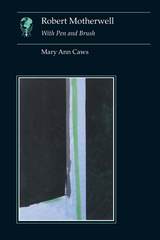
The author bases her analysis of Motherwell on the artist’s own writings and readings, as well as on extensive conversations and interviews with him. She considers his work and interests in relation to those of other Abstract Expressionists as well as to the work of the Surrealists. Her book highlights his deep attraction to France and French literature and art, and his concern with the idea of elegy and the tragedy of the Spanish Civil War. His singularly American spirit provided him with a manner of painting and thinking unique among the Abstract Expressionists, as well as with a distinctive and highly personal filter through which to interpret his fascination with European literature and history.

The robin is a small bird with a distinctive ruddy breast, at once a British national treasure and a bird with a global reputation. In this superbly illustrated account, Helen F. Wilson looks at many aspects of the cherished robin, from its status as a harbinger of seasonal change and, in the United Kingdom, an icon of Christmas, to its place in fairy tales, environmental campaigns, and scientific discovery. In moving between cultural and natural histories, Robin asks wide-ranging questions, such as how did the robin’s name travel the world? Why is the robin so melancholy? Who was Cock Robin? And how has the history of the color red shaped the robin’s ambivalent associations and unusual origin stories?
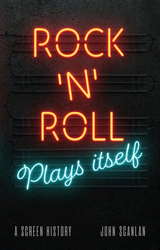
When rock ’n’ roll burst into life in the 1950s, the shockwaves echoed around the world, amplified by images of untamed youth projected on cinema screens. But for the performers themselves, corporate showbusiness remained very much in control, contriving a series of cash-in movies to exploit the new musical fad.
In this riveting cultural history, John Scanlan explores rock’s relationship with the moving image over seven decades in cinema, television, music videos, advertising, and YouTube. Along the way, he shows how rock was exploited, how it inspired film pioneers, and, not least, the film transformations it caused over more than half a century.
From Elvis Presley to David Bowie, and from Scorpio Rising to the films of Scorsese and DIY documentarists like Don Letts, this is a unique retelling of the story of rock—from birth to old age—through its onscreen life.

This entertaining and richly illustrated book examines the history of the diamond trade through the centuries from India and Brazil to South Africa and Europe and investigates what happens to diamonds once they reach the cutters and polishers. Marcia Pointon takes the reader on a unique tour of the ways in which the quadrahedron diamond shape has inspired design, architecture, and painting, from the symbolism of medieval manuscripts to modern-day graffiti. She questions the etiquette of engagement rings, and she reminds us why and how lost, stolen, or cursed diamonds create suspense in so many classic novels and films. This compelling and fascinating account of the history of sparklers around the world will appeal to all who covet, as well as all who despise, the unparalleled brilliance and glitter of the diamond.

Stafford argues that Barthes is best classified as a journalist, essayist, and critic, and he emphasizes the social preoccupations in his work—how Barthes continually worked to analyze the self and society, as well as the self in society. In doing so, Stafford paints a fascinating picture not just of Barthes, but of the entire intellectual scene of postwar France. As Barthes continues to find new readers today, this book will make the perfect introduction, even as it offers new avenues of thought for specialists.
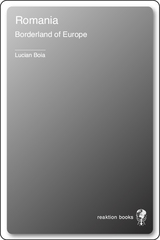
The book concludes with a tour of Bucharest, whose houses, streets and public monuments embody Romania's traditional values and contemporary contradictions.

As an economist and political theorist, Rosa Luxemburg created a body of work that still resonates powerfully today. Born in Poland in 1871, she became a revolutionary leader in Berlin, publishing works including Reform or Revolution and The Accumulation of Capital. In this account of Luxemburg’s short yet extraordinary life, Dana Mills examines Luxemburg’s writings, including her own correspondence, to reveal a woman who was fierce in professional battles and loving in personal relationships. What is her legacy today, a hundred years after her assassination in Berlin in 1919 at the age of forty-seven? Luxemburg’s emphasis on humanity and equality and her insistence on revolution give coherence, as this compelling biography illustrates, to a fraught life story and to her colossal economic and political legacy.
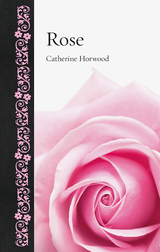
From Cleopatra’s rose petal–filled bed to Nijinsky’s Spectre de la Rose, from the highly prized Attar of Rose oil so beloved by the ancient Persians to the rosy scents of top perfume labels today, from Shakespearean myths about the War of the Roses to the significance of roses in Queen Elizabeth I’s embroidered dresses, and even to blockade-running during the Napoleonic Wars to satisfy Empress Josephine’s passion for collecting her favorite flower, Rose blossoms with the many stories of our ardor for this botanical family. Featuring a bower of illustrations and drawing on an array of sources as rich and many-hued as roses themselves, Horwood’s tale opens our eyes and noses to the world’s major rose-growing nations. With operatic tales of medieval bestsellers, nurserymen’s rivalries, and changing tastes in our personal flower beds, Rose is certain to woo both gardeners and non-gardeners alike.
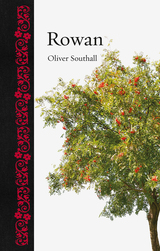
Rowan is the first in-depth natural and cultural history of this much-loved plant sometimes called mountain ash or dogberry. Through myth, medicine, literature, land art, and contemporary rewilding, Oliver Southall uncovers the many meanings of this singular reddish, fruit shrub: a potent symbol of nostalgia on the one hand and of environmental activism on the other. Taking the reader on an eclectic journey across history, Rowan charts our changing relationships with nature and landscape, raising urgent questions about how we value and relate to the non-human world.
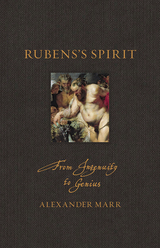
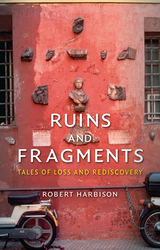
Harbison guides us through ruins and fragments, both ancient and modern, visual and textual, showing us how they are crucial to understanding our current mindset and how we arrived here. First looking at ancient fragments, he examines the ways we have recovered, restored, and exhibited them as artworks. Then he moves on to modernist architecture and the ways that it seeks a fragmentary form, examining modern projects that have been designed into existing ruins, such as the Castelvecchio in Verona, Italy and the reconstruction of the Neues Museum in Berlin. From there he explores literature and the works of T. S. Eliot, Montaigne, Coleridge, Joyce, and Sterne, and how they have used fragments as the foundation for creating new work. Likewise he examines the visual arts, from Schwitters’ collages to Ruskin’s drawings, as well as cinematic works from Sergei Eisenstein to Julien Temple, never shying from more deliberate creators of ruin, from Gordon Matta-Clark to countless graffiti artists.
From ancient to modern times and across every imaginable form of art, Harbison takes a poetic look at how ruins have offered us a way of understanding history and how they have enabled us to create the new.
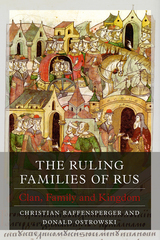
Kyivan Rus’ was a state in northeastern Europe from the late ninth to the mid-sixteenth century that encompassed a variety of peoples, including Lithuanians, Polish, and Ottomans. The Ruling Families of Rus explores the region’s history through local families, revealing how the concept of family rule developed over the centuries into what we understand as dynasties today. Examining a broad range of archival sources, the authors examine the development of Rus, Lithuania, Muscovy, and Tver and their relationships with the Mongols, Byzantines, and others. The Ruling Families of Rus will appeal to scholars interested in the medieval history of eastern Europe.
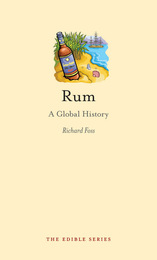
“Yo ho ho and a bottle of rum!” A favorite of pirates, the molasses-colored liquid brings to mind clear blue seas, weather-beaten sailors, and port cities filled with bar wenches. But enjoyment of rum spread far beyond the scallywags of the Caribbean—Charles Dickens savored it in punch, Thomas Jefferson mixed it into omelets, Queen Victoria sipped it in navy grog, and the Kamehameha Kings of Hawaii drank it straight up. In Rum,Richard Foss tells the colorful, secret history of a spirit that not only helped spark the American Revolution but was even used as currency in Australia.
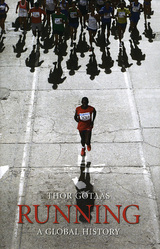
In the past decade, the number of Americans who consider themselves runners more than doubled—in 2008, more than 16 million Americans claimed to have run or jogged at least 100 days in the year. Though now running thrives as a convenient and accessible form of exercise, it is no surprise to learn that the modern craze is not truly new; humans have been running as long as they could walk. What may be surprising however are the myriad reasons why we have performed this exhausting yet exhilarating activity through the ages. In this humorous and unique world history, Thor Gotaas collects numerous unusual and curious stories of running from ancient times to modern marathons and Olympic competitions.
Amongst the numerous examples that illustrate Gotaas’s history are King Shulgi of Mesopotamia, who four millennia ago boasted of running from Nippur to Ur, a distance of not less than 100 miles. Gotaas’s account also includes ancient Egyptian pharaohs who ran to prove their vitality and maintain their power, Norwegian Vikings who exercised by running races against animals, as well as little-known naked runs, bar endurance tests, backward runs, monk runs, snowshoe runs, and the Incas’ ingenious infrastructure of professional runners.
The perfect gift for the sprinter, the marathoner, or the daily jogger, this intriguing world history will appeal to all who wish to know more about why the ancients shared our love—and hatred—of this demanding but rewarding pastime.
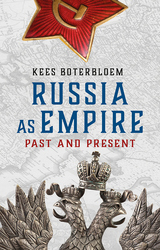

Richard Anderson looks at Russia’s complex relationship to global architectural culture, exploring the country’s central presence in the Rationalism and Constructivism movements of the 1920s, as well as its role as a key protagonist during the Cold War. Looking deeply at Soviet Russia, he brings the relationship between architecture and socialism into focus through detailed case studies that situate buildings and architectural concepts within the socialist milieu of Soviet society. He tracks the way Russian architectural institutions departed from the course of modernism being developed in capitalist countries, and he reappraises the architecture of the Stalin era and the final decades of the USSR. Finally, he traces the influence of Soviet conventions on contemporary Russian architecture—which is now a more heterogeneous mix of approaches and styles— and how it made a lasting and little-known impact on territories extending from the Middle East, to Central Asia, and into China.
A bold new assessment of Russia’s architectural legacy and contemporary contributions, this book is a fascinating exploration of a tumultuous place—and the creativity that has come from it.
READERS
Browse our collection.
PUBLISHERS
See BiblioVault's publisher services.
STUDENT SERVICES
Files for college accessibility offices.
UChicago Accessibility Resources
home | accessibility | search | about | contact us
BiblioVault ® 2001 - 2024
The University of Chicago Press









